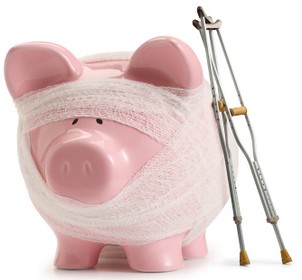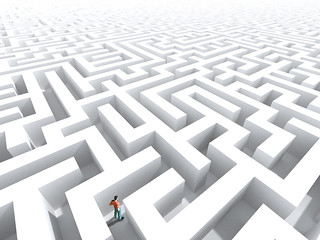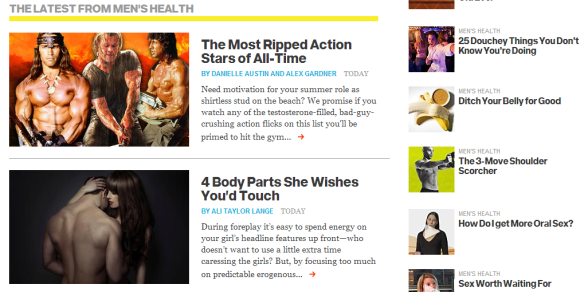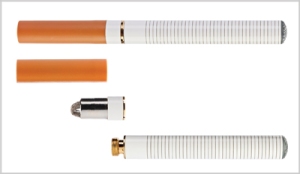Blog Archives
Wellness Wednesday: Mindfulness 101
- Improving focus, concentration and precision.
- Enhancing the quality of communications and relationships.
- Increasing the clarity of our thinking and intentions.
- Improving efficiency and safety.
- Improving stress management.
- Decreasing feelings of depression and anxiety.
- Increasing resilience to change.
- Strengthening faith and self-confidence.
- When starting a new activity: Begin your day with two minutes of silence and attention to the breath, or take a few mindful breaths before starting your car, or focus on the breath before starting your exercise routine.
- In the middle of an on-going situation or process: Bringing attention to the breath, or to the sensations arising while washing the dishes, eating a meal, walking the dog, doing a job, etc.
- When you are just waiting, in between the things on the schedule: Gently bringing attention to the breath or the sounds or the sensations or the sights or even the thoughts while at a red light, in a line at the bus stop or grocery store, or waiting for someone else to arrive.
- Expect your mind to wander. This can happen even if you’re trying to be mindful for a few minutes. Be patient with yourself when this happens and gently return awareness to the sensation of your breath.
- Notice any tendency to judge yourself or to be hard on yourself. A judgment is a type of thought. When you notice a judgmental thought go through your mind, refocus your attention on your breath.
- Relaxation often accompanies mindfulness and is an added benefit to practicing mindfulness.
- The more you practice, the more mindful you will become. This means that you will notice more things, including more painful things. Although this can seem like a problem, it is actually progress. Acknowledging painful things is the first step to learning how to cope with them.
Wellness Wednesday: Do I Really Need to Wipe Down At the Gym?

- Wash your hands. Wash your hands using soap for 20 seconds before and after workouts, according to CDC guidelines. Make sure to also dry your hands.
- Sanitize if you can’t wash. No soap and water? Then try alcohol-based sanitizer with at least 60 percent alcohol. Apply and rub all over all surfaces of the hands and fingers until hands are completely dry.
- Disinfect your gym equipment. They’re at the gym for a reason. Use disinfectant sprays and wipe down equipment and mats before and after you work out.
- Shower after working out. Your sweaty clothes are also ideal for bacteria to grow. Showering can help prevent this.
- Protect your feet. If you’re going to use the gym showers, wear some kind of footwear, like flip flops. Wash your feet and dry them to prevent athlete’s foot.
- Wash your clothes. Avoid re-wearing gym clothes if you haven’t washed them. This includes socks and swimwear.
- Cover your skin. If you have an open wound, cover them with a waterproof bandage. You should also avoid pools.
- Don’t share personal care items. If it comes into contact with someone else’s skin, avoid sharing. This includes towels, water bottles, soap, razors, combs, brushes or make-up.
Wellness Wednesday: What’s the deal with e-cigarettes?
Wellness Wednesday: How to Sleep
It may be strange to accept, but many of us don’t really understand how to sleep properly. This is why as the end of the semester nears, students on campus are noticeably more tired and desperate for sleep. Most of us stay up late to study, but let’s be honest, many students mindlessly browse the Internet or watch Netflix instead of getting some shuteye.
Research published in the Journal of Nature and Science of Sleep found that about 70% of college students get insufficient amount of sleep, and 50% reported daytime sleepiness. And while many of us trade study for sleep, the same study suggests that those that stay up late tend to have lower GPAs, compromised learning, and impaired moods. It also puts you at risk for developing a number of health complications, such as heart disease and obesity. Sleep is so important for your brain is because sleep allows the brain to rejuvenate and reorganize. This is why it’s challenging to recall information when you haven’t had a full night’s rest.
Many college students lack proper sleep hygiene. Sleep hygiene is the behaviors and practices needed to sleep well on a regularly. These include:
- Have a regular bedtime and awakening time. Your body will get used to a pattern, making it easier to sleep and wake up.
- Avoid screen time before sleeping. Blue light from you computers and phones suppresses your body’s melatonin production which affects your ability to sleep, and it may shift your internal clock, causing your body think your bedtime is later than usual.
- Avoid studying in bed. Your body may start to associate your bed with work, making it more difficult for you to fall sleep.
- Avoid exercising within 2 hours of your bed time. Your body will stay active even after you’re done exercise, making your body feel not ready to sleep.
- Avoid caffeine, alcohol, spicy, and sugary foods 4-6 hours before bedtime. Some of these foods are stimulants making it more difficult for you to sleep, or causes disruptive sleep, causing you to feel unrested.
Sleep is vital for your health, mood, and academic performance. While it may be a difficult to change your sleep habits, start with a few of these sleep hygiene tips.
Wellness Wednesday blog posts are written by Student Wellness or Campus Health Services staff members. Visit healthyheels.org for the original post.
Wellness Wednesday: 9 Ways to Build Intimacy (HINT: it’s NOT what you’re thinking…)
Sex and intimacy are often used interchangeably, but intimacy and sex are not the same. Which means you can be intimate with your partner without having sex. In fact, many people have romantic relationships without engaging in sexual intercourse or any sexual activity (check out our awesome blog about different types of abstinence!).
So what is intimacy and how is it different from sex?
Intimacy means connecting deeply with another person. All kinds of relationships have intimacy, including familial relationships, friendships, and romantic partnerships, which I will be focusing on for this blog. And intimacy is a process, not a goal. It’s a process that lasts as long as the relationship. Intimacy can include connecting emotionally, spiritually, intellectually and physically.
Whether you choose to be sexually active or not, you can still create intimacy in your relationship.
How?
1. HUGS! actually, any kind of affectionate touching, like hand holding, light massage, touching hair/face, and kissing are all ways to build intimacy in a relationship. Research shows that physical contact not only creates connection, it also boosts immunity, and releases “feel-good” neurotransmitters in the brain.
2. Look at your partner: smile at them across a crowded room. Take some time to sit quietly over a meal or on the couch. Besides touch, eye contact may be the earliest way we learn to connect to another person; it is how we first learn about intimacy and build empathy as an infant.
3. Get active: do something new and different, like playing tennis or taking a class together. This helps you and your partner make memories together that you can laugh about and enjoy for months or years to come. Plus, it can help you see and appreciate your partner in a whole new way (who knew they had such amazing dance skills?…).
4. Go on a trip: doesn’t need to be extravagant; it could be a picnic in the arboretum or an afternoon at the Ackland Art Museum. Proactively seeking out new environments allows you both to see each other in a new and different light, which helps you get to know each other on a deeper level.
5. Do something nice: again, this doesn’t have to be buying a fancy gift or putting on some extravagant romantic evening. How about washing the dishes that have piled up in the sink while your partner is studying? Or go out and buy their favorite study snack and bring it to them at the UL.
6. Praise your partner in front of others: this is a HUGE confidence boost to your partner! Being publicly supportive shows that you pay attention and appreciate them for their gifts and talents. And when that praise gets back to your partner, they will feel it exponentially, knowing that your praise was totally unsolicited.
7. Ask open-ended questions: ask about hopes and dreams for the future; ask what they are thinking or feeling right here and now; ask about past experiences or favorite memories; ask about favorite colors, flowers, or pet peeves. Then, LISTEN carefully, without distractions (laptop closed, TV off, phone out of sight). Let your partner know that learning more about them trumps everything else in that moment.
8. Be self-aware: reflect on your own values, hopes and dreams, and ideal partner qualities. Make your own “do well/do better” list to help reflect on your strengths and areas for improvement. Be honest and open with your partner about who you are, what you like and dislike, and what you want.
9. Be vulnerable: this may be the hardest, but best way to build closeness in a relationship. Share your insecurities, your fears, and the things that have hurt you in the past.
Being vulnerable doesn’t just mean expressing your deepest emotions (although this is definitely a big part), it also means letting a bit of your cray-cray out. Go ahead and confess your habit of separating the chocolate from the nuts in your trail mix before eating all the nuts one-by-one and then the chocolate (wait…am I alone in this?).
Don’t be afraid to be silly and let your goofball flag fly! Your partner will probably appreciate you more for it. Plus, you will end up feeling even more deeply cared for and accepted knowing that you can just be yourself around your partner.
Allowing yourself to be vulnerable lies at the heart of intimacy, because it creates that deep human connection that we all crave. If you haven’t watched this Ted Talk on the power of vulnerability, check it out:
Wellness Wednesday blog posts are written by Student Wellness or Campus Health Services staff members. Visit healthyheels.org for the original post.
Wellness Wednesday: Crunching for Exams ― The Foods to Eat When Studying
Wellness Wednesday: So how does Student Health Insurance Actually Work?
Healthcare and health insurance can be complicated. For many students, college can be the first time they are confronted with how insurance actually works. In this post, we’ll set up the basics around health insurance and review some key terms.

How health insurance works
Simply put, health insurance companies pay for some or all of the cost of medical expenses. Exactly how much health insurance pays towards healthcare costs depends on:
- the insurance plan;
- the type of visit or procedure; and
- the provider (e.g., whether or not the provider is in the health insurances’ “network”).
You can get health insurance in a variety of ways:
- individual health insurance (example: enrolling through a state’s Exchange or Affordable Care Act program)
- employer insurance (example: entity you work for providers insurance), or
- student insurance (example: UNC provides an option for students to enroll in a student health care plan).
Breaking down health insurance terms
- Premium: In essence, this is the price of admission, or what you regularly pay to have your insurance plan (for example: X dollars a month).
- Co-payment (“co-pay”): An amount of the visit/procedure you pay up-front (for example: paying $20 for a doctor’s visit).
- Co-insurance: A percentage of a bill the patient is required to pay, after accounting for co-payments, deductibles, and any other discounts.
- Coverage: The amount the health insurance company pays for each procedure, service or visit. This depends on the health plan, and might be a percentage (for example: 60% of the cost), or may be a fixed amount for certain procedures (for example: will cover 100% of preventative care services). Usually, you can find some basic information on coverage on your insurance card.
- In-network/ Out-of-network: Insurance companies will have lists of providers that accept their specific insurance brand (“in-network”). This is akin to businesses accepting certain kinds of payment methods: one might take Visa, Mastercard and American Express; while another might only Visa (“out of network” for American Express and Mastercard). How do you find out which providers are in vs. out of network? Health insurance companies usually provide a directory/listing of in-network providers (see below for tips on finding out more about your plan). Or, if you have a specific provider in mind, you can contact them to ask what types of health insurance they accept. Learn whether your insurance is in-network at Campus Health Services here.
- Explanation of benefits: This is a break-down of the total costs
- Deductibles: This is a set amount you have to pay each year in medical bills before the health insurance company starts paying. So, for example, if your plan’s deductible is $300, then you have to spend $300 before your health insurance kicks in and starts paying for medical costs. Note that as a general rule, the higher your premium (the cost to have insurance), the lower your deductible.

Maximizing your insurance
Insurance plans vary considerably in what they cover, and can be worthwhile to what extent insurance plans cover various visits and procedures. If you are concerned about coverage, cost or confidentiality (if you’re on a shared plan with others), you can contact insurance companies before you visit a provider. To do this:
- First, check your insurance card, which will usually have information on co-insurance, deductibles, prescription drug coverage, and emergency coverage.
- For more detailed information, you can often look online to see what your specific plan covers. Many insurance plans have an option to create online accounts, where you can access information on specific plan benefits, and look for “in-network” providers.
- You can also call the insurance company to inquire about coverage for a specific procedure, visit or prescription drug coverage. The contact information is usually on the card.
Additionally, for UNC Students: more information on UNC’s student health insurance policy, and in-network insurance providers at UNC Campus Health Services can be found on the UNC Campus Health Services website.
Wellness Wednesday: Get Involved with Student Wellness (& get free stuff!)
By now, many of you may have discovered one of the greatest joys of a college campus — FREE STUFF — but you may not know that Student Wellness offers a lot more than the free frisbees some of you snagged at Orientation or the water bottles you picked up at us from Fall Fest. We also offer free programs and services to all students!
Below is an overview of some of the things we’re planning on offering this semester!
Do you have questions about:
- Contraceptive options?
- HIV testing and counseling?
- Well Women’s Exams?
- Post-diagnosis STI management questions?
- Pretty much anything relating to sexual health?
Well, no worries! Just call Student Wellness at 919.962.WELL and schedule a FREE, private* appointment to meet with a trained health educator today!
PASS (Peak Academic Success & Satisfaction) Fair: A chance to relax and have fun right before Final Exams
- Free catered food (Past vendors include Vimala’s and Jersey Mike’s)
- Massages from Aveda
- Board games & Wii Fit
- Yoga station
- Free scantrons & blue books
- So much free stuff!
Stay tuned for more information on PASS, which will take place during exam week this semester!
LDOC HeelFest: Celebrate the last day of classes with Battle of the Bands-style show. Support local groups and your friends, vote for the winner of a grand prize, and get FREE FOOD!
Stay tuned for more information and ways to get VIP passes to the event (which will be on LDOC Spring semester!), which gets you even more free stuff! Want to be a student judge at the event? More information will be available soon.
World AIDS Day: A large-scale free HIV testing/screening event
In honor of World AIDS Day, UNC Student Wellness will be organizing a free, confidential, walk-in HIV testing event in the Carolina Union Great Hall. This event is free and open to students, faculty, staff, and the broader community. Participants can get their results in under one hour, and there are no needles involved!
Wellness Wednesday: How To Rethink Masculinity and Be Healthy
In honor of Men’s Health Month, I wanted to write a bit about “Men’s Health”. Having no idea where to start, I simply turned to Google.
Do something for me: Google “Men’s Health”. I’ll wait. Now, what did you see? Undoubtedly, the first thing that pops up is Men’s Health Magazine. Take a look at the image below, a screenshot taken from their website:

Things that popped out at me from this, their current homepage: 1) Being super-ripped is an awesome way to be, bro! 2) A healthy body is a ripped body, bro!
Okay, so I added “bro” bit because I thought it was funny, but here’s my point: aren’t these all incredibly superficial goals? And why is this front page on a “Men’s Health” website?
For men, what it means to be healthy sometimes gets lost in the protein-shake and get-ripped craze of our modern society. We are in an unprecedented age of hyper-masculinity and muscle-bound super heroes. Think about it: Captain America, Thor, 300, Batman, Spartacus, and many others feature some of the biggest and most extreme action heroes we have ever seen. Thanks to advances in sports medicine and nutrition, we now have star athletes who are stronger, faster, bigger, and better than ever before.
So I ask again: For men, what’s healthy?
According to a Today/AOL Body Image Survey released just this past February, 53%, that’s right, over half of men surveyed said that they felt unsure about their appearance at least once a week. To add to that, 41% of men said they worry that people judge their appearance. So guys, if you’ve ever caught yourself having these thoughts, you’re DEFINITELY not alone.
But for some men, feeling poorly about themselves goes beyond what’s normal and can become problematic.
According to this article, are facing unprecedented levels of men seeking treatment for body-dysmorphia, which causes men to become obsessed with building muscle and perfecting perceived flaws, which are not obvious to others.
If you or a friend notices that you’re so preoccupied with your body and appearance that it negatively impacts your social life, dietary habits, other major aspects of your daily life, or you just want an objective opinion without the threat of judgment, you can talk to someone at Counseling and Psychological Services, found in the Campus Health Building at UNC.
So, what can you do to improve your self-image? First, start looking inward. Try to be aware when you’re getting caught up in comparing yourself to others. Know that most people don’t have that perfectly chiseled body. Also, try to accept where you are today with your body and even if you aren’t where you want to be. If you don’t currently have a workout schedule, there are many benefits to regular exercise, not just physically but psychologically as well.
But, remember, guys, though your goal of being optimally healthy and fit is a great one, try not to fall into the trap of feeling inadequate when you see the idolized images of some “yoked up” dudes online, in the movies, on TV, or in a magazine. These images don’t reflect the real world and is an impractical goal for most of us to achieve.
If you take nothing else away from this article, know that you’re really not alone in this, and if you seek out help, it never means that you’re weak or are less of a man. You might even inspire someone else to do the same.
If you are interested in exploring masculinity further, check out the UNC Men’s Project.
–Written by Dennis Carmody and Michael Goodling
Dennis Carmody is an MPH candidate in the Health Behavior department at the UNC Gillings School of Global Public Health. He is currently enjoying his summer practicum with the great folks at UNC Student Wellness.
This post is written by Campus Health and Student Wellness staff, not by Campus Rec Staff.
Wellness Wednesday: Is Coffee Bad For You?
Today I wanted to write about one of the great loves of my life. No, it’s not a significant other, or a pet, or some electronic, soul-slurping gadget….nope, I’m talking about that steaming cup of black coffee that kick starts my day, every day. I love everything about coffee: the smell, the taste, the color, the warm excited feeling I get after I drink it. Without it, I feel sluggish and unfit for human interaction.
But, I can’t write about coffee, because I’m supposed to be writing about healthy things and coffee’s not healthy, right? As it turns out, more and more research is showing that the health BENEFITS of coffee consumption may outweigh the risks.
So, what are the benefits?
- Coffee has antioxidants (the good stuff found in many fruits and vegetables, not to mention tea, dark chocolate, and red wine). Actually, Americans get more antioxidants from drinking coffee than from anywhere else.[1] Antioxidants lower your risk for heart disease and stroke.
- Coffee contains minerals like magnesium and chromium that help your body control blood sugar, thereby lowering your risk for type 2 diabetes.
- Studies have linked coffee consumption to lower risk for Parkinson’s, dementia (including Alzheimer’s), and liver diseases like liver cancer and cirrhosis[2]

So, you don’t drink coffee (Gasp! That’s cool; we can still be friends). But maybe you’re a fan of the caffeine. GOOD NEWS! There are some benefits to moderate caffeine consumption, whether or not you get it from coffee:
- Improves brain function and alertness (duh, right?)
- Improves athletic performance (be sure to stay extra-hydrated to counteract caffeine’s diuretic effect)
- Increases levels of dopamine in the brain, which helps make you feel good
- Speeds metabolism and assists with fat breakdown in the body
- Reduces the risk of gallstones and gallbladder disease
Now, I’m not sayin you should start chuggin Redbulls and Rockstars in the name of good health. It may not stunt your growth, but too much caffeine can cause restlessness, insomnia, anxiety, irritability, and digestive troubles. Keep it healthy by
1) Avoiding caffeine 4-6 hours before bed
2) Limiting your consumption to 1-4 cups a day, and
3) NEVER mixing caffeine and alcohol
More info on coffee-drinking and your health:
http://www.cnn.com/2010/HEALTH/04/28/coffee.studies/index.html
http://www.webmd.com/food-recipes/features/coffee-new-health-food
http://www.youtube.com/watch?v=lutMjeIIm-w
http://health.howstuffworks.com/mental-health/human-nature/health-myths/coffee-stunt-growth.htm
More on caffeine and athletic performance:
http://www.runnersworld.com/article/0,7120,s6-242-301–13105-0,00.html






